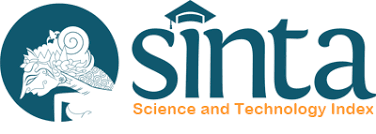The relationship of body shape perception, eating disorders, nutritional knowledge and food intake with nutritional status adolescent girls in Ayodya Pala
DOI:
https://doi.org/10.22236/argipa.v4i2.3829Abstract
Youth groups who work as dancers are prone to malnutrition. The leaner body shape is considered to make it easier to move so that teens tend to limit food intake in order to achieve ideal body shape. The purpose of this study was to determine the relationship of perceptions of body shape, eating disorders, nutritional knowledge, and food intake with nutritional status in adolescent girls in Ayodya Pala. This research was conducted in May 2019 at the Ayodya Pala. The research was a cross-sectional study. This study used a total sampling technique, which means that the total population was the subject of research. The result showed that 58% of subjects had poor nutritional status, 50,8% of subjects had negative perceptions of body shape, 57,1% of subjects had eating disorders, 55,6% of subjects had less knowledge of nutrition. More than 50% of subjects were lack of energy and macronutrient intake. In conclusion, there was a significant relationship (p=0,000) between body shape perception, eating disorders, nutritional knowledge, and food intake with nutritional status.
Keywords: Body Shape Perception, Food Intake, Eating Disorders, Nutritional Knowledge, Nutritional Status

















